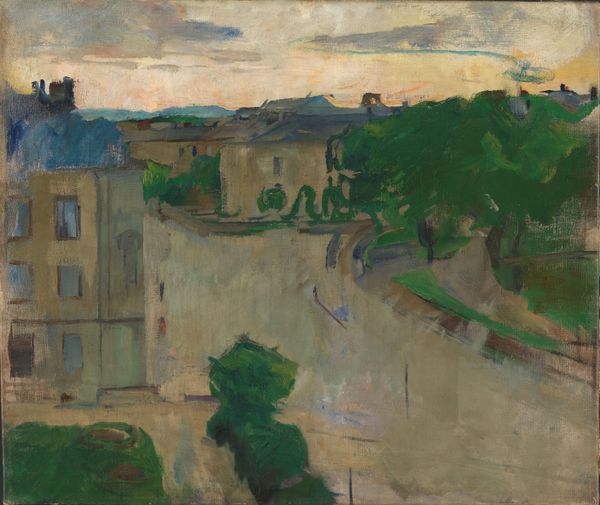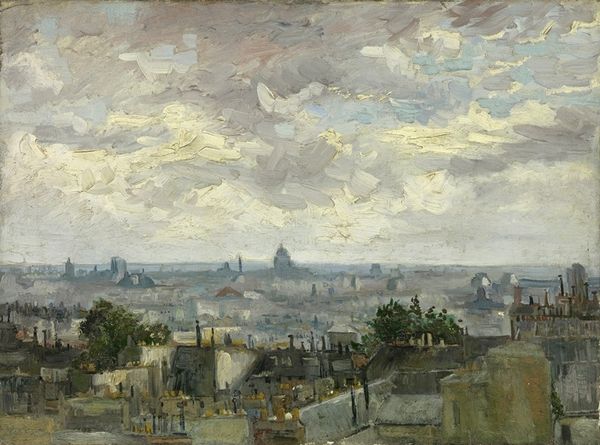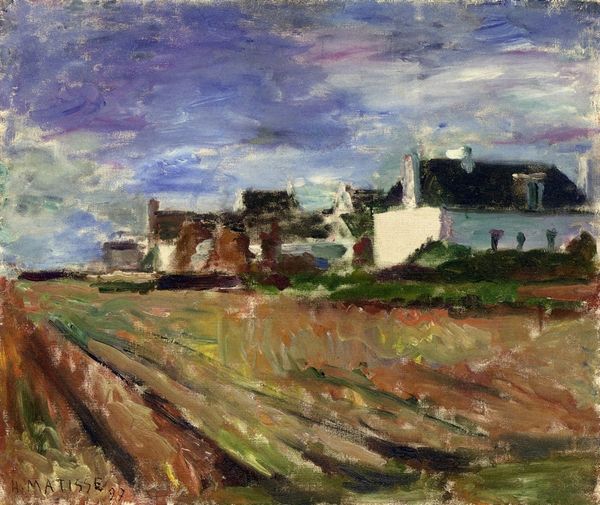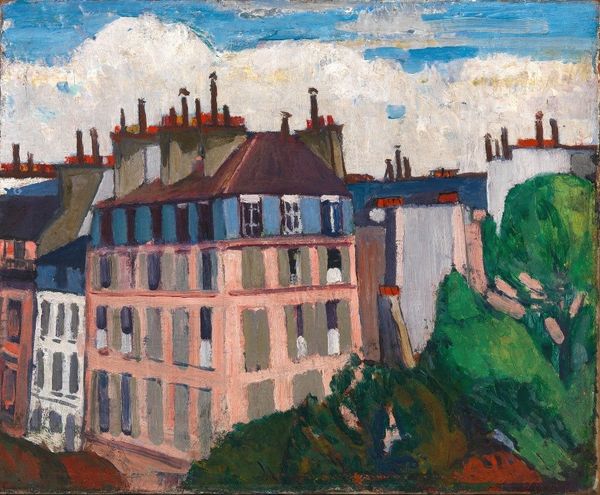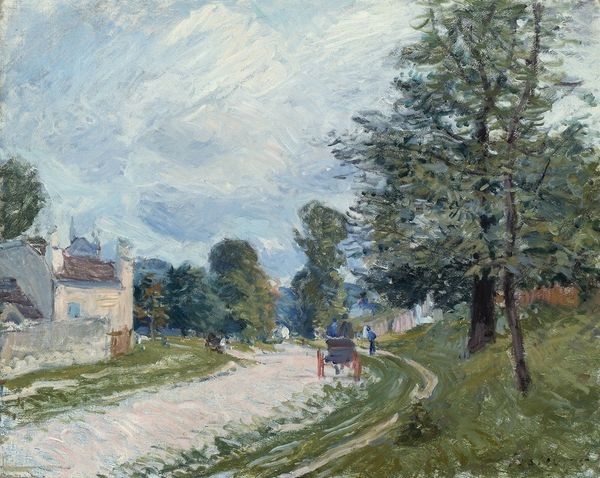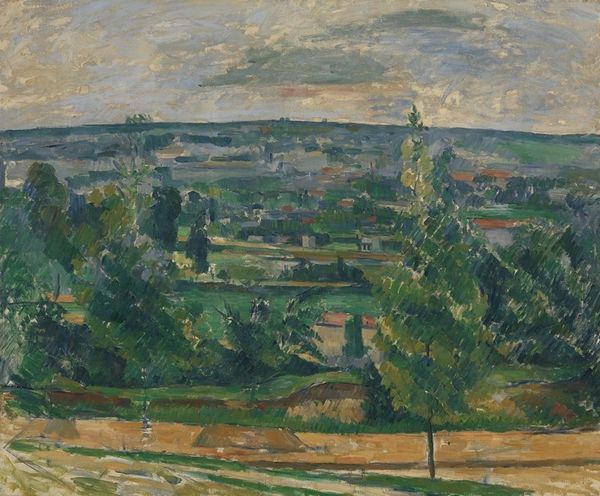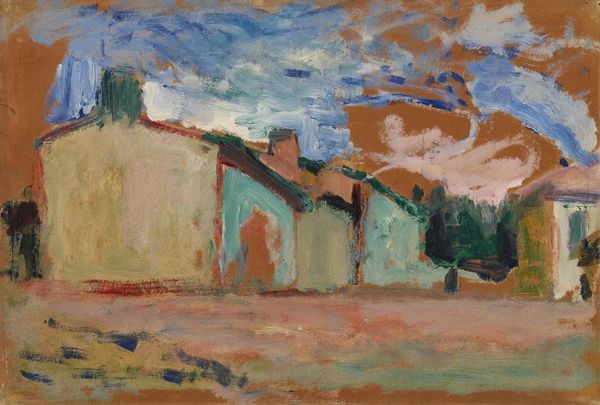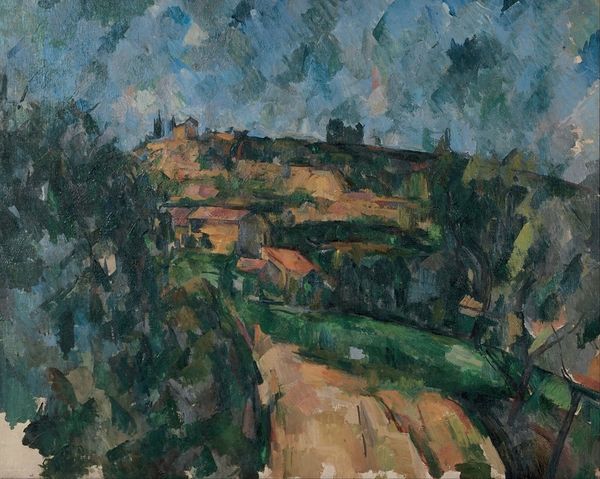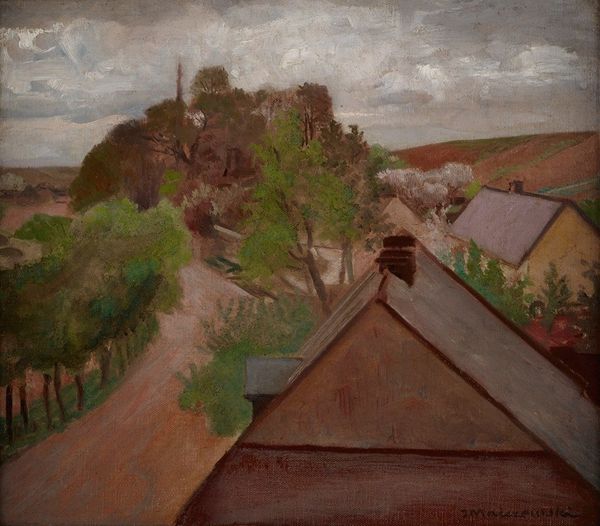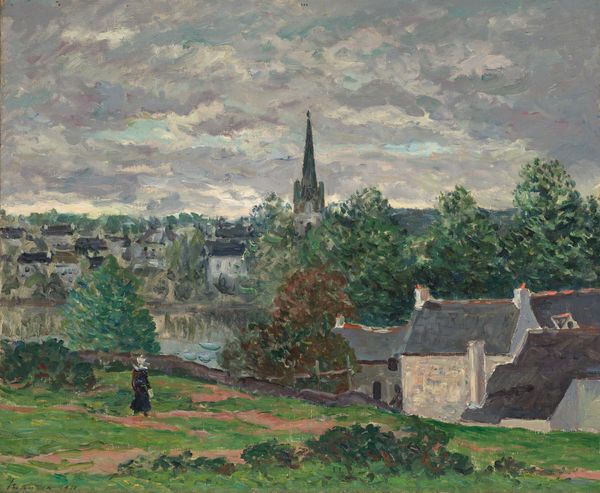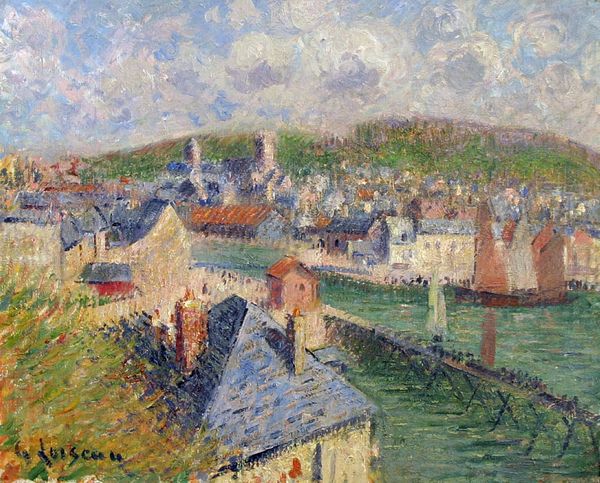
Copyright: Public Domain: Artvee
Curator: We're looking at Édouard Vuillard’s “Les Toits Mauves,” an oil painting from 1909. Vuillard, often associated with the post-Impressionist and Intimist movements, here offers a glimpse into an intimate, almost concealed urban setting. Editor: Ah, the rooftops call to me. They seem huddled together, whispering secrets under that brooding sky. It’s moody, definitely. Like a Tuesday afternoon when you’d rather be anywhere else. Curator: Absolutely. The composition directs our gaze not to a grand vista but to the commonplace, the intimate scenes of daily life that are often overlooked. Vuillard’s use of color, particularly the muted purples and greens, and soft brushstrokes, invite a contemplative mood, situating the artwork within broader discussions of early twentieth-century urbanity. Editor: I love how the colors sort of bleed into each other. It’s less about capturing the literal appearance and more about capturing a feeling. You can almost smell the rain and hear the distant rumble of the city. It’s a memory, not a postcard, if that makes sense. Curator: Yes, there's a strong sense of place, but the subjectivity is key. The "mauve roofs" themselves, are significant. This specific color suggests a symbolic tension: purple often evokes royalty and wealth, but its subdued presentation here speaks more to a nuanced reality of urban life at the turn of the century, shaped by rapid industrialization and social stratification. Editor: The green down below kinda hints at an unruliness, in contrast to the more constrained and uniform housing and roofs. I see some pale, possibly yellow or white-ish spots, could it be that he’s contrasting urban constriction with flourishing flora, despite everything? The people that once thrived are now, just as this painting is, weathered? Am I reading too much into it? Curator: Not at all! This juxtaposition might also be seen to parallel the political undercurrents in pre-war Europe, perhaps commenting on issues of social mobility, ecological awareness and individual experiences against a backdrop of shifting social values and anxieties. It invites a richer dialogue. Editor: It is striking, I agree. The picture pulls you in, almost reluctantly, makes you look a little deeper than you might expect. Okay, Vuillard, I see you! Curator: Indeed. It underscores art’s unique ability to invite us into the realm of lived experience, both intimately and collectively, prompting continuous reflections.
Comments
No comments
Be the first to comment and join the conversation on the ultimate creative platform.
